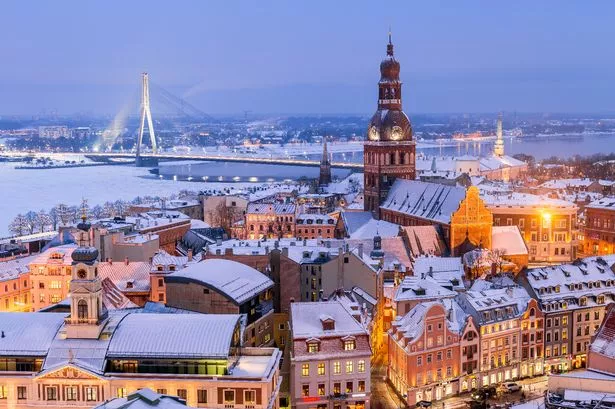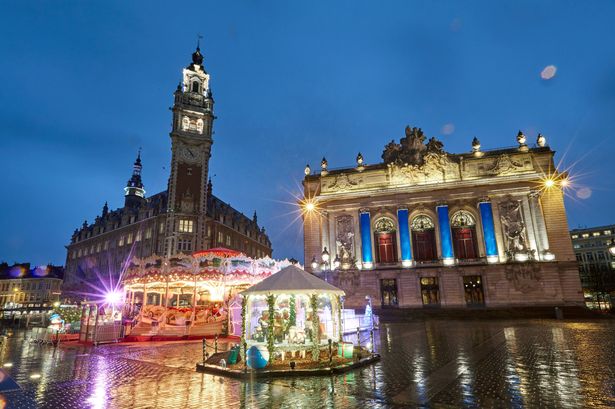Nothing says Christmas like a festive market packed with inspiring gifts and seasonal treats, and what better way to enhance your experience than an affordable European getaway to marvel at the magic
Wandering around a Christmas market with the aroma of spiced mulled wine and wooden cabins stacked with unique gifts is part of what makes the festive season so magical. And there’s one in Europe, where it’s been dubbed the cheapest for a winter getaway.
There is a catalogue of European countries offering some of the most spectacular Christmas markets, set within their enchanting towns with mountain backdrops that could easily resemble something out of a Hallmark movie. Nevertheless, some of these locations can come with a hefty price tag as costs are bumped up during the festive season, but that doesn’t mean we need to sacrifice our European winter wonderland.
One European destination that offers the magic of Christmas at a bargain rate is the capital of Latvia, Riga, with direct flights starting from just £20. The city, renowned for its pedestrian-only medieval Old Town and Art Nouveau architecture, offers everything you could wish for in a festive winter break.
The biggest appeal during this time of year is their charming and traditional Riga Christmas Market in Dome Square, packed with stalls and a thriving food scene with wintery street-food dishes and Latvian cuisine. Warming mulled wines are also available, along with festive cocktails, while visitors browse the stalls of local Latvian artisans.
And it might be one of the best places for some Christmas shopping inspiration, with a selection of handcrafted gifts such as beeswax candles, gingerbread, socks, wool gloves, and creative kits to create wreaths, wall decor and acrylic dishes. Adding to the magic of the Riga Christmas Market, which runs from 28 November to 4 January , will be music from a DJ every Friday, choirs and music ensembles performing on Saturdays and folk music on Sundays.
The city, considered the ‘Art Nouveau capital of Europe’, is nothing short of captivating with its charming, colourful homes decorating the streets and its lively cultural scene. What’s more, it’s filled with shops and cosy restaurants for a traditional taste of Latvia, and its bustling Livu Square, boasting bars and nightclubs.
Another hugely appealing factor about this European city is its affordability. The annual Post Office Christmas Markets Barometer found that Riga is one of the most affordable European destinations for a two-night weekend Christmas market experience, compared to Copenhagen and Vienna, which have been ranked as some of the most expensive.
The Post Office revealed how much you’re likely to spend in Riga during a two-night break for two during the Christmas market season, and it’s certainly good value for money. They revealed the following prices:
- Four cups of coffee from a cafe or bar = £11.49
- Two three-course meals for two (including a bottle of wine) = £132.89
- Two return bus/train transfers from the airport to the city centre = £7.18
- Four glasses of mulled wine, punch or Glühwein at the Christmas market £14.37
- Four pieces of cake/gingerbread/stollen at Christmas market £12.57
Additionally, the Post Office found that a two-night B&B stay in Riga and direct flights or Eurostar for two would cost a total of £377.00. With everything included, this weekend getaway for two in Riga would cost £555.50 in total, or £277.75 per person.
This is in stark contrast to Copenhagen in Denmark, which was estimated to set two people back a whopping £1,056.55 for the exact same amenities as above. Or £926.41 for the same two-night trip to Vienna in Austria.
Direct return weekend flights from London Stansted to Riga start from around £87 per person, while you can snap up a mid-week return flight from around £45. Meanwhile, you can grab a flight from Leeds to Riga for as little as £20, or a return for around £42.
Additionally, direct flights from Manchester start from around £25, or £45 for a return flight. You can also fly from the East Midlands Airport (EMA), near Nottingham, from £22 to Riga, or spend around £45 on a direct return.
You can check the best flights on the Skyscanner website here.
Laura Plunkett, head of Travel Money at Post Office, said: “A short break to one of Europe’s colourful Christmas Markets is an attractive holiday option at this time of year. However, sterling’s drop in value is an important factor for travellers to consider before booking a trip, as it varies between currencies. The pound’s fall against the euro is smaller than against other European currencies – five per cent compared with 10.6 per cent against the Hungarian forint and 10.9 per cent against the Swedish kronor.
“The cost of flights and accommodation will also have a significant impact on overall costs so it is doubly important for holidaymakers planning a trip to do their homework to factor in how sterling’s value, flight and hotel capacity and meal costs will affect overall costs. Budget-conscious travellers stand to save hundreds of pounds if they choose carefully.”
Do you have a travel story to share? Email [email protected]





